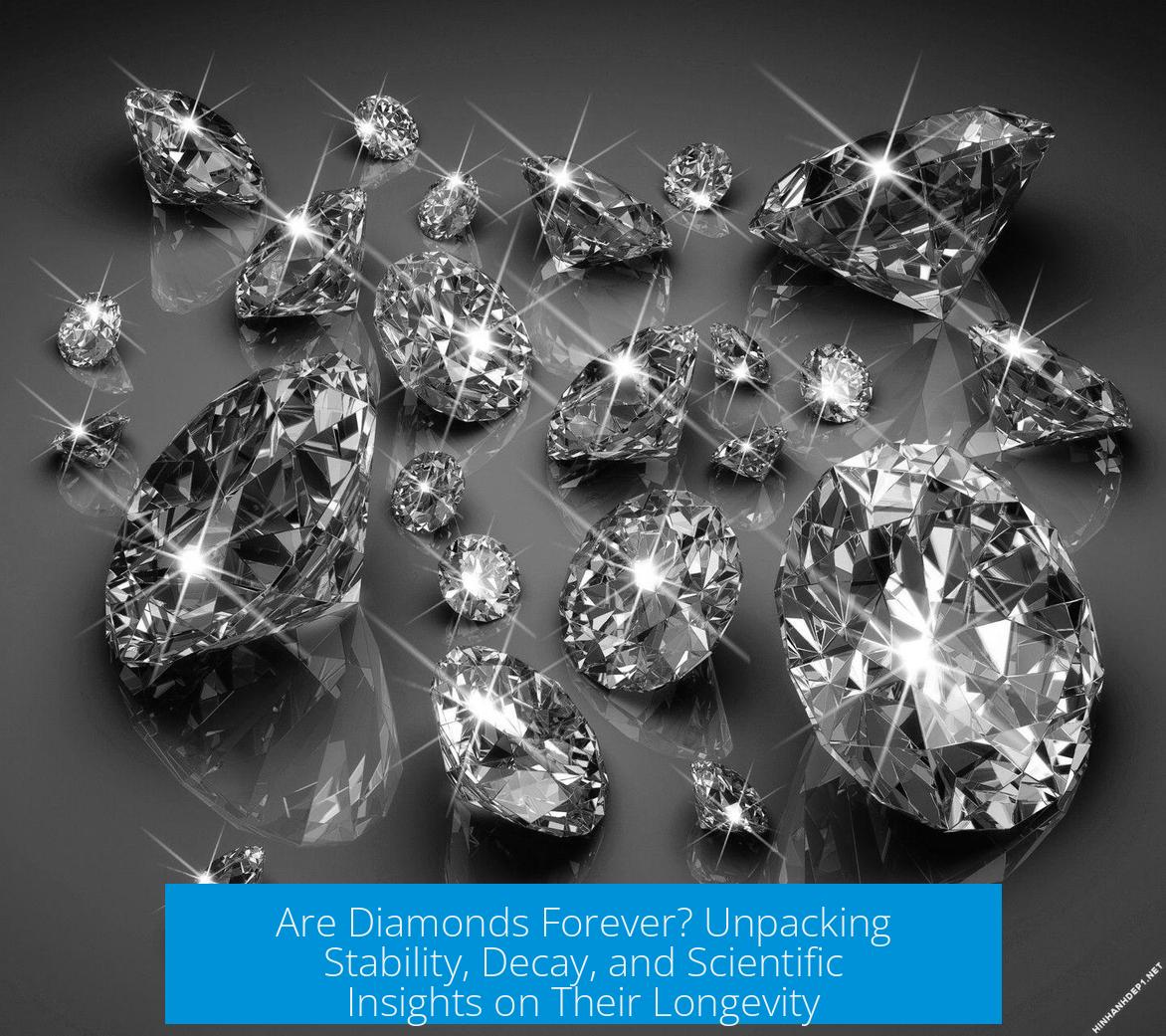Are Diamonds Forever?
Diamonds are not truly forever; they are a metastable form of carbon that will eventually convert to graphite given sufficient time and appropriate conditions. However, this transition occurs at a rate so slow under normal Earth conditions that diamonds appear effectively permanent on human timescales.
Understanding Diamond Stability
Diamonds as a Metastable Phase of Carbon
Diamonds belong to a class of carbon allotropes. Unlike graphite, which is the thermodynamically stable form of carbon under ambient conditions, diamonds are metastable. This means they exist in a state that is not the lowest energy configuration but remain intact due to a substantial kinetic barrier preventing transformation.
The high energy barrier to convert diamond to graphite ensures that, although diamond is not the most stable allotrope, the change happens extremely slowly. The process requires overcoming this barrier, which is why diamonds do not visibly degrade during typical human lifespans.
Carbon Allotropes: Diamond vs. Graphite
- Both diamond and graphite are pure carbon but differ in atomic structure.
- Diamond has a tetrahedral lattice giving it hardness and brilliance.
- Graphite is layered and stable due to delocalized electrons, making it the favored form under ordinary conditions.
Time Scale and Conditions of Diamond Decay
How Temperature Affects Diamond Stability
Temperature critically influences the rate at which diamond transitions to graphite. At high temperatures (thousands of Kelvin), this conversion can occur within human-observable time frames. For example, at about 1000°C, a cubic centimeter of diamond may take roughly one billion years to decay.
In contrast, at room temperature (~300 K), diamond decay is astronomically slow. Calculations estimate that the same volume of diamond would require approximately 10^80 years to convert fully into graphite. This period dwarfs the current age of the universe (~1.38 × 10^10 years), making the decay practically negligible for all known human purposes.
Kinetic Barriers and Human Timescales
The transition between diamond and graphite involves surmounting a significant activation energy. This kinetic barrier slows reaction rates, so diamond appears stable. On everyday timescales, diamonds do not degrade due to these energy constraints.
External Factors Impacting Diamond Stability
Heat and Oxygen Influence
Diamonds oxidize and degrade rapidly when exposed to high heat and oxygen. For instance, in a fire, diamonds combust into carbon dioxide. This chemical transformation underscores that diamonds are not indestructible in all environments.
Environmental Conditions Affecting Diamond Formation and Decay
Diamonds form deep within Earth under extreme pressure and temperature over millions of years. Near the surface, at lower pressure and temperature, they are no longer in a stable environment. Over millions or billions of years, they tend to revert to the more stable allotrope, graphite.
However, this natural reversion is very slow and mostly irrelevant for practical considerations due to the immense timescales involved.
Scientific Principles Explaining Diamond Longevity
Spontaneous Transition Toward Lower Energy States
From thermodynamics, systems tend to move toward their lowest energy state. For carbon, graphite is this state. Diamonds will spontaneously convert to graphite over time, consistent with this principle.
Quantitative Measures of Diamond Decay
| Parameter | Value / Description |
|---|---|
| Half-life of diamond decay (estimated) | ~400 years for 5% mass loss under specific experimental conditions |
| Time for 1 cc diamond to decay at 1000°C | ~1 billion years |
| Time for 1 cc diamond to decay at room temperature (approx.) | ~1080 years |
The decay rates depend heavily on temperature and environmental factors. Predictive models incorporate these variables to estimate diamond longevity precisely.
Philosophical and Practical Perspectives
“Forever” on Cosmic Timescales
From a cosmological standpoint, diamonds will not last indefinitely. Given vast timescales, on the order of the universe’s lifetime and beyond, diamonds revert to graphite or are destroyed by cosmic processes.
Practically, this decay is insignificant. The enormous half-lives and kinetic barriers ensure that diamonds retain their form over billions of years, giving rise to the phrase “diamonds are forever” in cultural contexts, especially in jewelry.
Durability in Everyday Life
In ordinary human experience, diamonds resist physical and chemical changes. They do not degrade or transform under typical conditions, making them suitable for long-lasting ornamental use.
Nonetheless, external extreme conditions—like fires or exposure to oxidizing environments at elevated temperatures—can destroy diamonds.
Key Takeaways
- Diamonds are a metastable form of carbon that will eventually convert to graphite given enough time.
- The conversion process is extremely slow due to a high kinetic energy barrier, practically preventing decay within human lifetimes.
- Diamond stability depends on environmental factors, especially temperature and oxygen presence.
- At high temperatures, decay occurs faster, but at room temperature, the timescale for decay exceeds the age of the universe by many orders of magnitude.
- Diamonds combust in presence of heat and oxygen, showing they are not absolutely indestructible.
- From a cosmic perspective, diamonds will not last forever, but on practical and human timescales, they are effectively permanent.
Are diamonds chemically stable forever?
No, diamonds are metastable forms of carbon. They slowly convert to graphite, which is more stable, but this process takes an extremely long time under normal conditions.
How long does it take for a diamond to change into graphite?
At room temperature, it would take about 1080 years for a diamond to decay. This time decreases drastically at very high temperatures but remains immensely long at typical conditions.
Can heat or fire destroy a diamond?
Yes. High heat and oxygen can convert diamonds into carbon dioxide. For example, intense fires can burn diamonds, so they are not truly indestructible in such environments.
Why do diamonds not turn into graphite quickly?
There is a high energy barrier that prevents diamonds from changing to graphite fast. This kinetic barrier means the transition is negligible on human timescales.
Do diamonds last forever in the universe?
Diamonds won’t last indefinitely on cosmic timescales. Eventually, all diamonds will degrade or be destroyed by cosmic events long before their chemical conversion occurs.




Leave a Comment